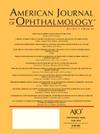Understanding Patient Experience with Past Barriers to Eye Care and How Barriers were Addressed in the Michigan Screening and Intervention for Glaucoma and Eye Health through Telemedicine Program.
IF 4.1
1区 医学
Q1 OPHTHALMOLOGY
引用次数: 0
Abstract
PURPOSE To use community engaged research to understand barriers to eye care utilization and explore participant experiences with free glaucoma screenings through the Michigan Screening and Intervention for Glaucoma and eye Health through Telemedicine (MI-SIGHT) program. DESIGN Qualitative study Subjects, Participants, and/or Controls: Purposive sampling of 42 participants out of 254 total participants from two community clinics in Flint and Ypsilanti, Michigan enrolled between 10/29/21 and 12/22/21. METHODS, INTERVENTION, OR TESTING We conducted semi-structured interviews that explored past barriers to eye care, motivations for attending and overall experience with the MI-SIGHT program. Interviews were transcribed then coded using Grounded Theory; and thematic analysis was completed. MAIN OUTCOME MEASURES Themes were compared between 1) the two clinics; 2) those who did and did not screen positive for glaucoma; and 3) of those who screened positive for glaucoma, comparing between those randomized to standard care and those randomized to personalized coaching and education. RESULTS The most common past barriers to eye care included cost, insurance status, and transportation. Motivations to attending glaucoma screenings with the MI-SIGHT program included affordability, location of community clinics, and having a trusted referral source endorse the program. Overall, participants most valued the rapport and communication received when interacting with the ophthalmic technicians who also acted as care navigators as part of MI-SIGHT. CONCLUSIONS The MI-SIGHT program was able to address barriers such as cost and transportation through having free eye screenings located at the community clinic. Developing trust and rapport with the participants and the community clinics was critical to the program's high satisfaction rates.了解患者对过去眼部护理障碍的体验,以及密歇根州通过远程医疗项目筛查和干预青光眼和眼部健康的障碍是如何解决的。
目的通过社区参与研究了解眼科保健利用的障碍,并通过密歇根州青光眼和远程医疗眼健康筛查和干预(MI-SIGHT)项目探索参与者免费青光眼筛查的经历。设计定性研究对象、参与者和/或对照:在21年10月29日至21年12月22日期间,从密歇根州弗林特和伊普斯兰蒂两个社区诊所的254名参与者中,有目的地抽样42名参与者。方法、干预或测试我们进行了半结构化访谈,探讨了过去眼部护理的障碍、参加MI-SIGHT项目的动机和总体体验。采访被记录下来,然后使用扎根理论进行编码;并完成了专题分析。主要结局指标:比较1)两家诊所的主题;2)青光眼筛查阳性和未筛查阳性的患者;3)青光眼筛查呈阳性的患者,将随机接受标准治疗的患者与随机接受个性化指导和教育的患者进行比较。结果过去最常见的障碍包括费用、保险状况和交通。参加MI-SIGHT项目青光眼筛查的动机包括价格合理,社区诊所的位置,以及有可信赖的转诊来源支持该项目。总的来说,参与者最看重的是在与眼科技术人员互动时获得的融洽关系和沟通,这些技术人员也作为MI-SIGHT的一部分担任护理导航员。结论通过在社区诊所进行免费眼科检查,MI-SIGHT项目能够解决成本和交通等障碍。与参与者和社区诊所建立信任和融洽关系对项目的高满意度至关重要。
本文章由计算机程序翻译,如有差异,请以英文原文为准。
求助全文
约1分钟内获得全文
求助全文
来源期刊
CiteScore
9.20
自引率
7.10%
发文量
406
审稿时长
36 days
期刊介绍:
The American Journal of Ophthalmology is a peer-reviewed, scientific publication that welcomes the submission of original, previously unpublished manuscripts directed to ophthalmologists and visual science specialists describing clinical investigations, clinical observations, and clinically relevant laboratory investigations. Published monthly since 1884, the full text of the American Journal of Ophthalmology and supplementary material are also presented online at www.AJO.com and on ScienceDirect.
The American Journal of Ophthalmology publishes Full-Length Articles, Perspectives, Editorials, Correspondences, Books Reports and Announcements. Brief Reports and Case Reports are no longer published. We recommend submitting Brief Reports and Case Reports to our companion publication, the American Journal of Ophthalmology Case Reports.
Manuscripts are accepted with the understanding that they have not been and will not be published elsewhere substantially in any format, and that there are no ethical problems with the content or data collection. Authors may be requested to produce the data upon which the manuscript is based and to answer expeditiously any questions about the manuscript or its authors.

 求助内容:
求助内容: 应助结果提醒方式:
应助结果提醒方式:


